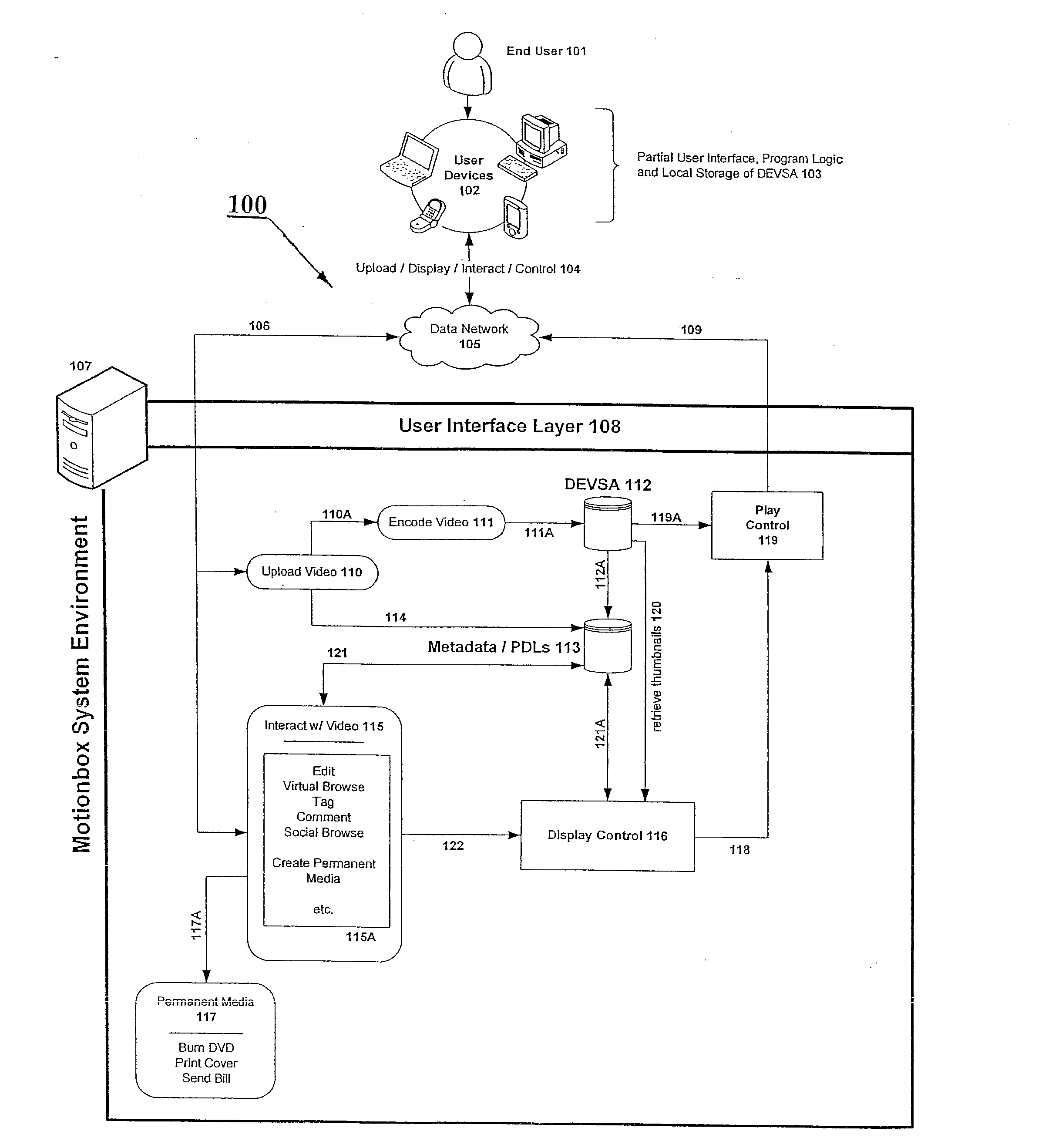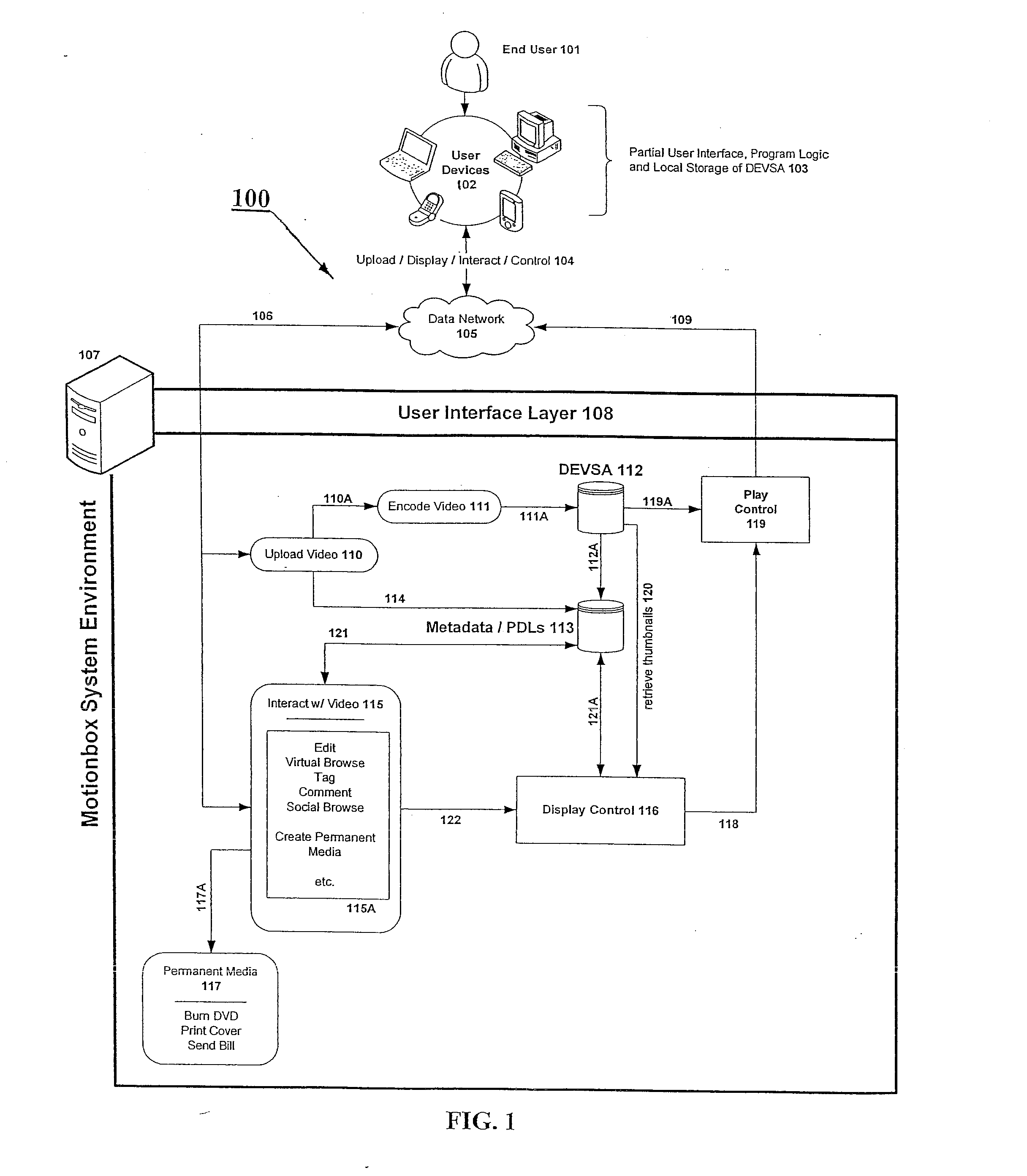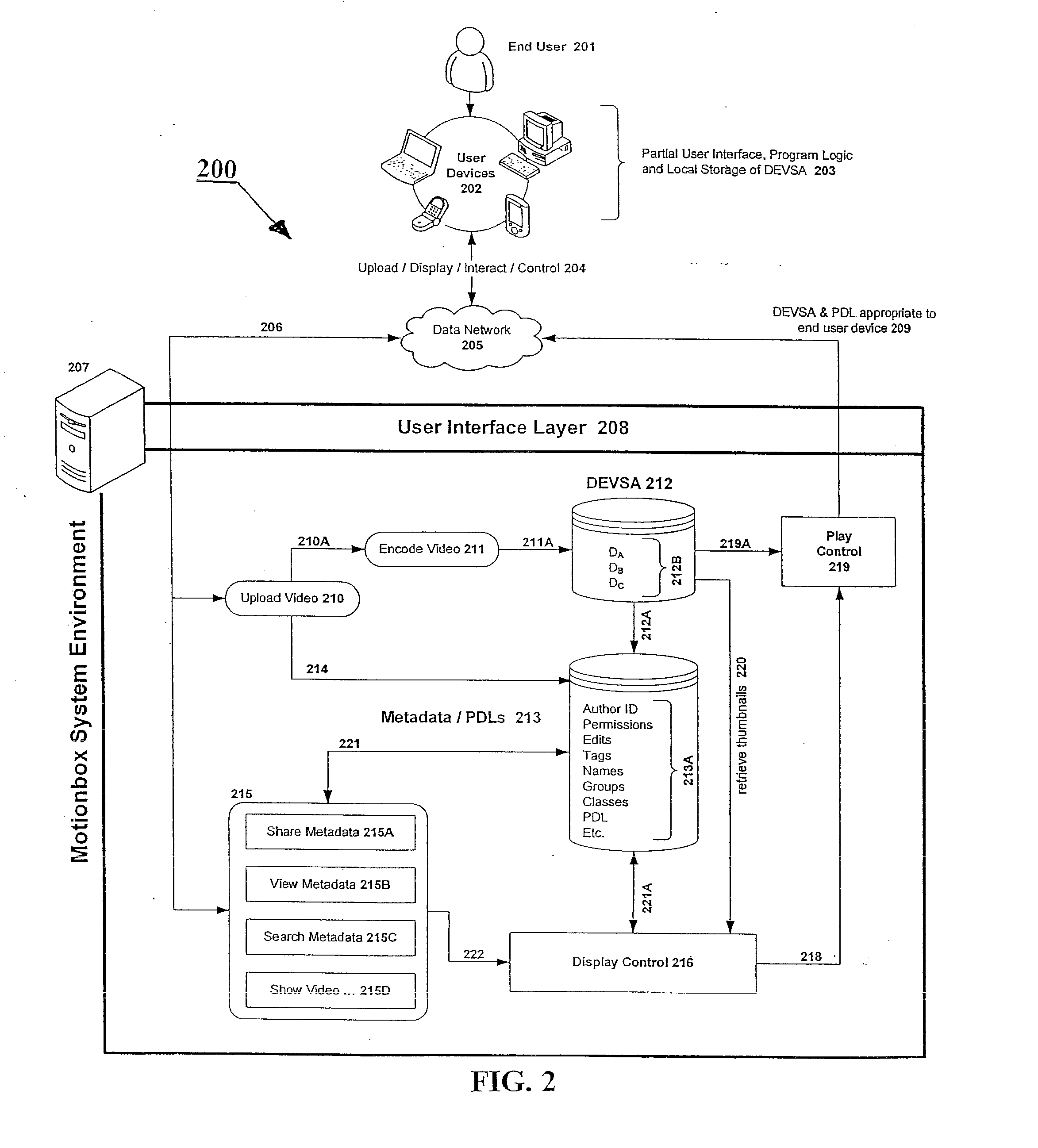Consumers are shooting more and more personal video using camera phones, webcams, digital cameras, camcorders and other devices, but consumers are typically not skilled videographers nor are they able or willing to learn complex, traditional
video editing and
processing tools like Apple iMovie or Windows Movie Maker.
Nor are most users willing to watch most video “VCR-style”, that is in a steady steam of unedited, undirected, unlabeled video.
Thus consumers are being faced with a problem that will be exacerbated as both the number of videos shot and the length of those videos grows (supported by increased
processing speeds, memory and bandwidth in end-user devices such as
cell phones and digital cameras) while the
usability of editing tools lags behind.
The result will be more and longer video files whose
usability will continue to be limited by the inability to locate, access,
label, discuss, and share granular sub-segments of interest within the longer videos in an overall
library of videos.
In the absence of editing tools of the videos, adding titles and comments to the videos as a whole does not adequately address the difficulty.
The reciprocal challenge is for users to help each other find those interesting segments of video.
Due to the time-based nature of the video, expressing interest levels, entering and tracking comments and / or tags or labels on subsegments in time of the video or other time-based media is a unique and previously unsolved problem.
A further detriment to the
consumer is that
video processing uses a lot of computer power and special hardware often not found on personal computers.
Consumers have been limited to editing and sharing video that they could actually get onto their computers, which requires the right kind of hardware to
handle their own video, and also requires physical movement of media and encoding if they wish to use video shot by another person or which is taken from stock libraries.
When coupled with the special complexities of digitally encoded video with synchronized audio the requirements for special hardware, difficult
processing and storage demands combine to reverse the common notion of using “free desktop MIPS and GBs” to relieve central servers.
Unfortunately, for video review and editing the desktop is just is not enough for most users.
The
cell phone is certainly not enough, nor is the Personal Digital Assistant (PDA).
Currently available editing tools are typically too difficult and
time consuming for consumers to use, largely deriving from their reliance on the same
user interface metaphors and import-edit-render pattern of high-end commercial
video editing packages like Avid.
Techniques (editing, revising, compaction, etc.) previously applied to these other forms of data types cannot be reasonably extended due to the complexity of the DEVSA data, and if commonly known forceful extensions are orchestrated they wouldBe ineffective in meeting users' objectives and / orBe economically infeasible for non-professional users and / orMake the so-rendered DEVSA data effectively inoperable in a commercially realistic manner.
Therefore a person skilled in the art of text or photo processing cannot easily extend the techniques that person knows to DEVSA.
As will be discussed herein the demonstrated state-of-the-art in DEVSA processing suffers from a variety of existing, fundamental challenges associated with known DEVSA
data operations.
These challenges affect not only the ability to manipulate the DEVSA itself but also manipulate associated
metadata linked to the internals of the DEVSA.
This application does not address new techniques for digitally encoding video and / or audio or for decoding DEVSA.
The difficulty in dealing with mere two dimensional photo technology is therefore so fundamentally different as to have no bearing on the present discussion (even more lacking are text art solutions).
For example, synchronized (time-based) comments are not easily addressed or edited by subsequent users using previously known methods without potential corruption of the DEVSA files and substantial effort costly to the process on a
commercial scale.
However the corollaries in the realm of time-based media are not well known and not supported within the current art.
To date no viable solutions have been provided which are accessible to the typical
consumer, other than very basic functions such as storing pre-encoded video files, manipulating those as fixed files, and executing START and STOP play commands such as those on a
video tape recorder.
As has been shown, for example in surveillance applications, this is a highly valuable adjunctive technology but it fails to address the present needs.b. It is not possible to take a “snapshot” of audio, as a person perceives it.
Due the complex encoding and encodation techniques employed, those files cannot be disrupted or manipulated without a severe risk to the inherent stability and accuracy of the underlying video and audio content.
This latter approach is much less feasible for photos than for text or numbers due to the
large size and the extensive encoding required of photo files.
It is additionally far less feasible for DEVSA than for photos because the DEVSA files are much larger and because the DEVSA encoding is much more complex and processor intensive than that for photo encoding.
In a similar analysis, the processing and storage costs associated with saving multiple old versions of number or text documents is a small burden for a typical
current user.
However, processing and storing multiple old versions of photos is a substantial burden for typical
consumer users today.
Ultimately, processing and storing multiple versions of DEVSA is simply not feasible for any but the most sophisticated users even assuming that they have use of suitable editing tools.
In a parallel problem, known to those with skill in the conventional arts associated with heavily encoded digitized media such as DEVSA, is searching for content by various criteria within large collections of such DEVSA.
However, when the conventional arts approach digitally encoded
graphics or, more challengingly, digitally encoded photos, and far more challengingly, DEVSA, managing the problem becomes increasingly difficult because the object of the search becomes less and less well-defined in terms, (1) a human can explain to a computer, and (2) a computer can understand and use algorithmically.
As is well known to those of skill in the art, repetitive encoding / decoding with edits introduces substantial risks for graphical, photographic, audio and video data.
However, if the all the user has are images of the figures, the challenges are substantial.
The point is that recognizing shapes gets tricky.
Turning to photos, unless there are
metadata names or tags tied to the photo, which explain the content of the photo, determining the content of the photo in a manner susceptible to search is a largely unsolved problem outside of very specialized fields such as police ID photos.
Washington by image recognition is extremely difficult for a computer.
Extensions of recognition technologies to video are potentially valuable but are even more difficult due to the complexities of DEVSA described previously.
Thus, solutions to the problems noted are extremely difficult to comprehend, and are not available through available recourses.
Repetitive encoding and decoding cycles are very likely to introduce accumulating errors with
resultant degradation to the quality of the video and audio.
Since, as stated previously, these are large files even after efficient encoding, economic pressures make it very difficult to keep many copies of the same original videos.
Conversely, efficient encoding, to reduce storage space demands, requires large amounts of computing resources and takes an extended period of time to complete.
What is not appreciated by the related art is the fundamental data problem involving DEVSA and current systems for manipulating the same in a consumer responsive manner.
 Login to View More
Login to View More  Login to View More
Login to View More 


